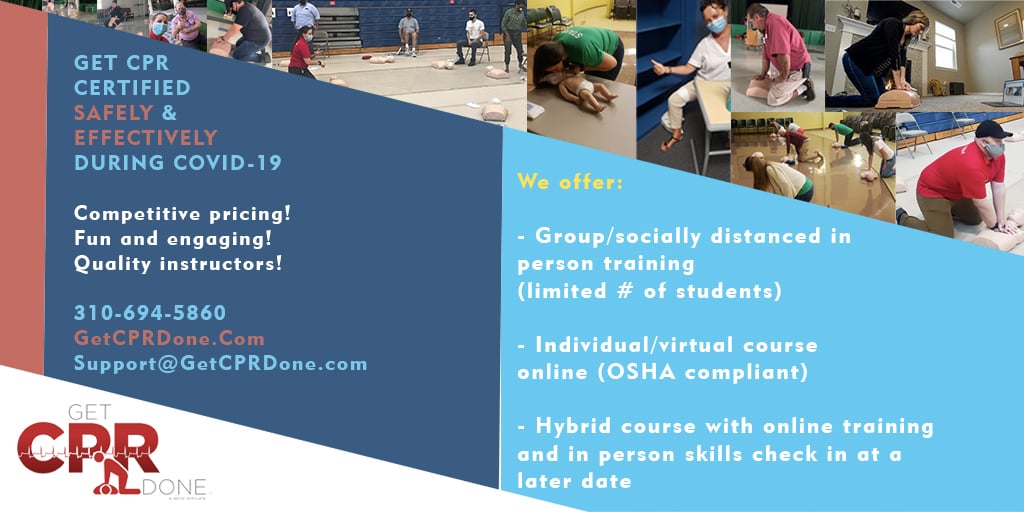
We sat down with our director of Get CPR Done, Felicia Gonsalez, to talk about the impact that the pandemic has had on CPR training.
Felicia has been in the emergency services field for roughly 17 years now. In that time, she’s had many hats; she was a firefighter and fire captain from 2004 to 2008, and has been an EMT since 2004. She’s been working with Joffe since June of 2018, and now takes on the role of our regional security director and GCD director. Her current priority is being our “training ninja”; Felicia trains professionals and beginners alike in emergency management, health coordination, security, and first aid skills.
Why CPR Training Matters
According to Felicia, the most important things she teaches are basic CPR and first aid skills. It’s essential for everyone to learn, she says, because “you could be the difference in saving someone’s life.” She says that even outside of the school environments she trains in, if a person witnesses an emergency, they may be the only person present with emergency training, which could mean that they are the only person capable of providing vital care and initiating emergency care services at all.
Her classes would typically be primarily in person. She customizes the training she offers based on the audience she’s working with. When working with teachers, she says by way of example, she wants them to know exactly where the first aid kits are in their classrooms, and where the AEDs are kept on their campus so that they can provide the best care possible in their specific environment. Felicia says that her classes combine lecture, pre-recorded training videos, a question and answer portion for clarity, and a skills portion in which participants work together to practice and perfect the skills that they have learned the theory for.
Training During the Pandemic
With the pandemic severely restricting in-person engagement (although, she clarifies, in-person classes are still available with limited participation and distancing measures in place), the majority of her training sessions have relocated online. “Virtual training is weird and scary,” she says, going on to say that taking away the engagement of a focused group working together on practical skills means that instructors have to work harder to connect with their students. She says that this element of team-building is essential to proper training; it gives participants “that warm, fuzzy feeling” of communal effort, which makes it easier for them to remember and utilize the training.
This has been a point of pride for Felicia, as she explains that her goal is to leave participants feeling 100% confident and comfortable, with a sincere sense of preparedness that means they will be willing and ready to help not only their students and coworkers, but their loved ones as well, if and when the time comes. “It’s refreshing to hear that,” Felicia says, “It feels good to hear that people feel confident.”
Felicia's team provides training through with the American Heart Association, the Health and Safety Institute, and EMS Safety to provide high-quality certification to educators. If you’re interested in receiving training for yourself or your staff, contact us here for more information.

